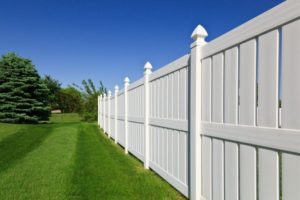
To give you some ideas, here are some of the best commercial fencing options available.
Fencing is a great idea for any property. They’re a great way to keep your employees and your business safe, and it can give your business more aesthetic appeal. The question now is: what fence do you want for your business? Each business has different needs for their fence. When you choose one, you have to consider its function and its durability. You also want to think about your budget and where your business is located. To give you some ideas, here are some of the best commercial fencing options available.
Chain-Link
Chain-link fencing is highly functional. It might not look as appealing as other commercial fencing options, but it’s perfect for high-traffic areas. Chain-link fencing is also easy to install on your property. This lets you finish the installation process quickly and easily.
Wood
Often ideal for small commercial areas, wood is one of the classic commercial fencing solutions. It’s a type of fencing that’s always fashionable. It has great aesthetic appeal and gives businesses a comforting feel that makes them more inviting to customers. On top of that, wood fences can offer you privacy wherever you need it.
The downside is that wood fencing does require upkeep. But, if you’re willing to put the time into keeping it in top shape, a wood fence can be the perfect choice for you.
Aluminum
If you want durable and robust fencing for your business, then aluminum fencing is just what you want. Aluminum commercial fencing creates a barrier that’s long-lasting and goes great in practically any commercial space. Aluminum fencing is perfect for any business that wants a little more security around their property.
Vinyl
Vinyl fencing a low-maintenance fencing choice. Also, it protects against the sun’s UV rays. Vinyl fencing has become an increasingly popular commercial fencing option because it’s highly affordable. Because of this, many businesses are opting for vinyl fencing these days.
Steel
Similar to aluminum fencing, steel fences are durable and will last a long time. They also don’t require any maintenance to stay in top condition. So if you don’t want to perform constant upkeep on your fence, but you still want a fence that offers security, steel commercial fencing is perfect for you.
Let Hercules Fence Help Set Up The Perfect Fence For You
Hercules Fence takes pride in being experts in residential, commercial, and high-security fencing. We have been serving our clients since 1955, with only the most knowledgeable of staff. Our staff is ready to serve you from Maryland and the Washington Metropolitan area. Our branch offices are in Manassas, Richmond, Newport News, Norfolk, Virginia, and Maryland.
Visit our website to see how we can be of service to you. Also, follow us on Facebook, YouTube, Twitter, and Linkedin to stay up to date with our latest news.
The post Five Commercial Fencing Choices You Can Use for your Business appeared first on Hercules Fence.